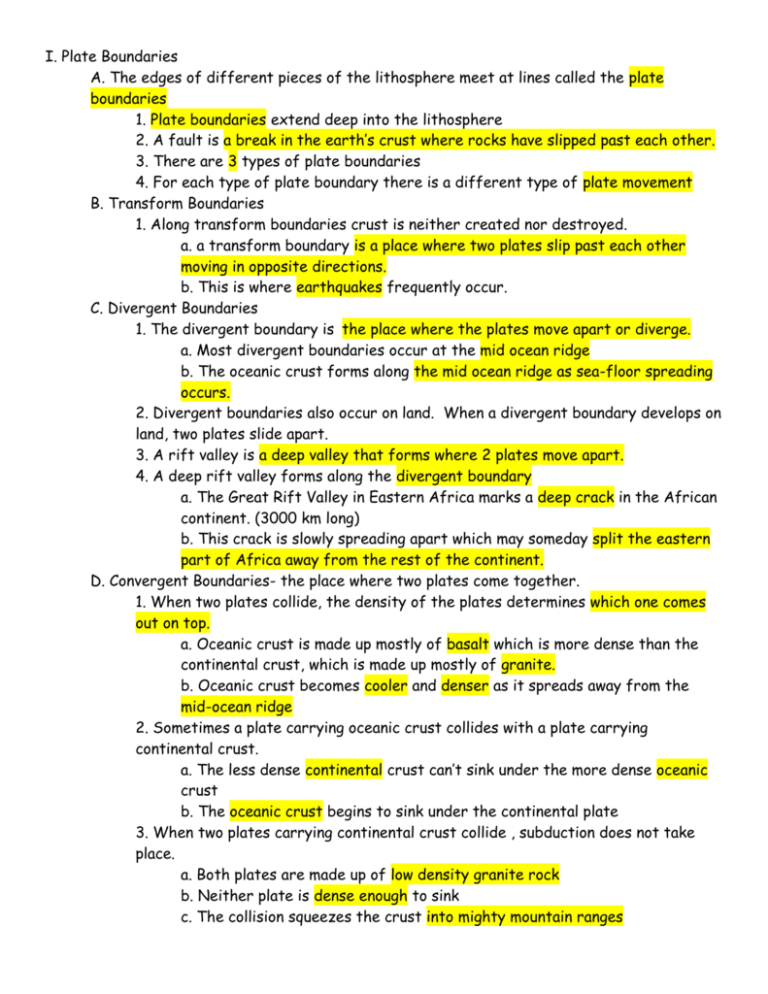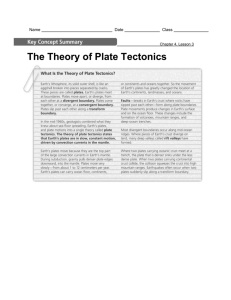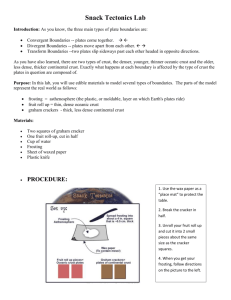Inside Earth Chapter 1 Section 5 Theory of Plate Tectonics
advertisement

I. Plate Boundaries A. The edges of different pieces of the lithosphere meet at lines called the plate boundaries 1. Plate boundaries extend deep into the lithosphere 2. A fault is a break in the earth’s crust where rocks have slipped past each other. 3. There are 3 types of plate boundaries 4. For each type of plate boundary there is a different type of plate movement B. Transform Boundaries 1. Along transform boundaries crust is neither created nor destroyed. a. a transform boundary is a place where two plates slip past each other moving in opposite directions. b. This is where earthquakes frequently occur. C. Divergent Boundaries 1. The divergent boundary is the place where the plates move apart or diverge. a. Most divergent boundaries occur at the mid ocean ridge b. The oceanic crust forms along the mid ocean ridge as sea-floor spreading occurs. 2. Divergent boundaries also occur on land. When a divergent boundary develops on land, two plates slide apart. 3. A rift valley is a deep valley that forms where 2 plates move apart. 4. A deep rift valley forms along the divergent boundary a. The Great Rift Valley in Eastern Africa marks a deep crack in the African continent. (3000 km long) b. This crack is slowly spreading apart which may someday split the eastern part of Africa away from the rest of the continent. D. Convergent Boundaries- the place where two plates come together. 1. When two plates collide, the density of the plates determines which one comes out on top. a. Oceanic crust is made up mostly of basalt which is more dense than the continental crust, which is made up mostly of granite. b. Oceanic crust becomes cooler and denser as it spreads away from the mid-ocean ridge 2. Sometimes a plate carrying oceanic crust collides with a plate carrying continental crust. a. The less dense continental crust can’t sink under the more dense oceanic crust b. The oceanic crust begins to sink under the continental plate 3. When two plates carrying continental crust collide , subduction does not take place. a. Both plates are made up of low density granite rock b. Neither plate is dense enough to sink c. The collision squeezes the crust into mighty mountain ranges









